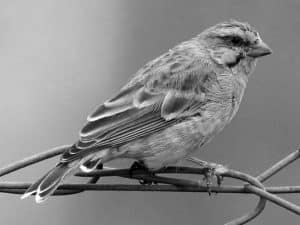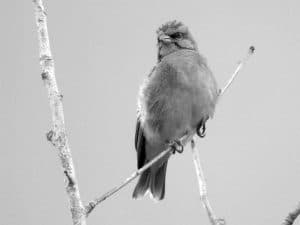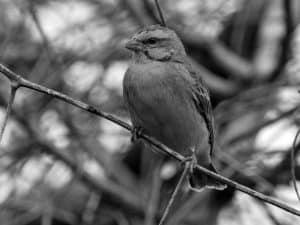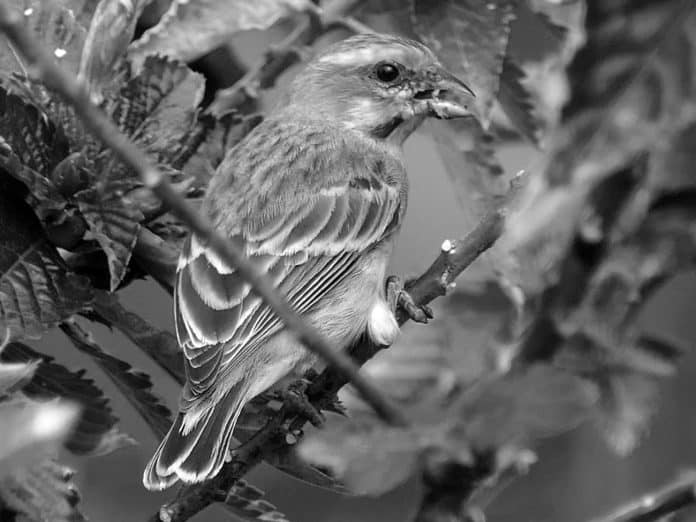Introduction to the Yellow-Fronted Canary
Nestled within the diverse avian tapestry of Tanzania lies a captivating species known as the yellow-fronted canary. This vibrant songbird, with its striking plumage and melodious tunes, has captured the hearts of birdwatchers and nature enthusiasts alike. As you delve into the world of the yellow-fronted canary in Tanzania, you’ll be enchanted by its unique characteristics, intriguing behaviors, and the vital role it plays in the delicate ecosystems.
Habitat and Distribution of the Yellow-Fronted Canary in Tanzania

The yellow-fronted canary is native to the eastern regions of Africa, with Tanzania serving as a prime habitat for this remarkable bird. Within the vast expanses of Tanzania, you can find the yellow-fronted canary thriving in a variety of environments, from the lush, verdant savannas to the rugged, arid landscapes.
One of the key habitats for the yellow-fronted canary is the Serengeti National Park, a UNESCO World Heritage Site renowned for its diverse wildlife. Here, you can spot these canaries flitting among the acacia trees, their golden-yellow plumage catching the sun’s rays and adding a vibrant splash of color to the surrounding landscape.
Beyond the Serengeti, the yellow-fronted canary can also be found in other protected areas, such as the Tarangire National Park and the Ngorongoro Conservation Area. These unique ecosystems, with their varied terrain and abundant vegetation, provide the perfect sanctuary for the yellow-fronted canary to thrive.
Physical Characteristics and Behavior of the Yellow-Fronted Canary
The yellow-fronted canary is a small, delicate bird with a distinctive appearance that sets it apart from its avian counterparts. Its most striking feature is the bright, golden-yellow patch on its forehead, which gives the species its name. The rest of the bird’s plumage is a harmonious blend of olive-green and yellow, with a white belly and distinctive black markings on its wings and tail.
In terms of behavior, the yellow-fronted canary is a social and active species, often seen in small flocks or pairs. They are known for their lively and melodious songs, which can be heard throughout the day as they flit from tree to tree, foraging for food and interacting with their fellow canaries.
One of the most fascinating aspects of the yellow-fronted canary’s behavior is its ability to adapt to different environments. Whether it’s navigating the dense foliage of the savannas or the sparse vegetation of the arid landscapes, these canaries possess a remarkable resilience that allows them to thrive in a variety of habitats.
Diet and Feeding Habits of the Yellow-Fronted Canary
The yellow-fronted canary is an omnivorous species, with a diverse diet that reflects the abundance of resources available in its natural habitat. These birds are known to feed on a variety of seeds, including those from grasses, herbs, and even some tree species. They also supplement their diet with insects, such as spiders, caterpillars, and small beetles, which they often catch mid-flight or pluck from the foliage.
The feeding habits of the yellow-fronted canary are particularly interesting, as they often engage in cooperative foraging. You may observe these canaries working together in small flocks, with some individuals acting as sentinels to keep watch for predators while the others focus on finding and gathering food. This collaborative approach not only enhances their feeding efficiency but also helps to ensure the safety of the entire group.
Breeding and Nesting Behavior of the Yellow-Fronted Canary
The breeding and nesting behavior of the yellow-fronted canary is a captivating aspect of their life cycle. These birds typically form monogamous pairs during the breeding season, which coincides with the onset of the rainy season in Tanzania, usually between November and May.
The nesting process begins with the male yellow-fronted canary selecting a suitable location, often in the dense foliage of a tree or shrub. The female then joins the male in constructing a delicate, cup-shaped nest, using a variety of materials such as fine grasses, plant fibers, and even spider webs.
Once the nest is complete, the female lays a clutch of 2-4 small, pale blue eggs. Both the male and female take turns incubating the eggs, with the incubation period lasting around 12-14 days. After the chicks hatch, the parents work tirelessly to feed and care for their offspring, ensuring their survival and successful fledging.
Conservation Status and Threats to the Yellow-Fronted Canary in Tanzania

The yellow-fronted canary is currently classified as a species of Least Concern on the IUCN Red List of Threatened Species. However, this charismatic bird faces a number of threats that can potentially impact its long-term survival in Tanzania.
One of the primary threats to the yellow-fronted canary is habitat loss and degradation, driven by factors such as deforestation, agricultural expansion, and urbanization. As the natural habitats of these birds are gradually diminished, their populations are at risk of declining.
Additionally, the illegal pet trade poses a significant threat to the yellow-fronted canary. These vibrant songbirds are highly sought after by collectors, leading to the capture and removal of individuals from the wild, which can have a detrimental effect on their population numbers.
To ensure the continued preservation of the yellow-fronted canary in Tanzania, conservation efforts are crucial. These efforts may include the establishment of protected areas, the implementation of sustainable land-use practices, and the enforcement of laws and regulations to curb the illegal wildlife trade.
Tips for Birdwatching and Spotting the Yellow-Fronted Canary in Tanzania
For birdwatchers and nature enthusiasts visiting Tanzania, the opportunity to spot the elusive yellow-fronted canary is a true delight. To increase your chances of encountering these captivating birds, consider the following tips:
- Visit the Right Habitats: Focus your birdwatching efforts on the protected areas of Tanzania, such as the Serengeti National Park, Tarangire National Park, and the Ngorongoro Conservation Area, where the yellow-fronted canary is known to thrive.
- Time Your Visit: The best time to spot the yellow-fronted canary is during the rainy season, typically between November and May, when the birds are most active and vocal.
- Observe Quietly and Patiently: These birds are often shy and elusive, so approach them slowly and quietly. Remain still and observe their movements and behaviors, as this will increase your chances of spotting them.
- Listen for Their Calls: The yellow-fronted canary is known for its melodious and distinctive songs, which can often be heard throughout the day. Pay close attention to the sounds around you, as this can help you locate and identify these birds.
- Use Binoculars and Field Guides: Equip yourself with a good pair of binoculars and a comprehensive field guide to help you identify the yellow-fronted canary and other bird species in the area.
Other Bird Species Found in the Same Habitat as the Yellow-Fronted Canary
The diverse ecosystems of Tanzania are home to a rich tapestry of avian life, and the yellow-fronted canary is just one of the many species that can be found in these habitats. Some of the other bird species that share the same environments as the yellow-fronted canary include:
- Superb Starling
- Lilac-Breasted Roller
- Bateleur Eagle
- Kori Bustard
- Crowned Crane
- Helmeted Guineafowl
- Lovebird
These birds, each with their unique characteristics and behaviors, contribute to the vibrant and captivating birdlife that can be observed in the protected areas of Tanzania.
The Importance of Preserving the Habitat of the Yellow-Fronted Canary
The preservation of the yellow-fronted canary’s habitat is not only crucial for the survival of this charismatic species but also for the overall health and balance of the entire ecosystem. As a key component of the food chain, the yellow-fronted canary plays a vital role in maintaining the delicate balance of the environment, contributing to the dispersal of seeds and the control of insect populations.
By protecting the natural habitats of the yellow-fronted canary, we not only safeguard the future of this remarkable bird but also ensure the continued well-being of the entire ecosystem. This, in turn, benefits the local communities who rely on the natural resources and the thriving wildlife for their livelihoods and cultural traditions.
To learn more about the yellow-fronted canary and how you can contribute to its conservation, consider booking a birdwatching tour in Tanzania. Experienced guides can lead you on a journey to discover this captivating species and other remarkable birds that call this region home. Take the first step towards an unforgettable wildlife adventure and explore the wonders of the yellow-fronted canary in its natural habitat.
Conclusion

The yellow-fronted canary is a true gem of the Tanzanian avian landscape, a species that captivates the hearts and minds of birdwatchers and nature enthusiasts alike. Through its vibrant plumage, melodious songs, and unique behaviors, this remarkable bird offers a window into the rich biodiversity of Tanzania.
As we continue to explore and appreciate the wonders of the yellow-fronted canary, it is crucial that we also work to protect its fragile habitat and ensure the long-term survival of this species. By supporting conservation efforts and responsible tourism, we can play a vital role in preserving the delicate balance of the Tanzanian ecosystem and safeguarding the future of this captivating avian wonder.

































